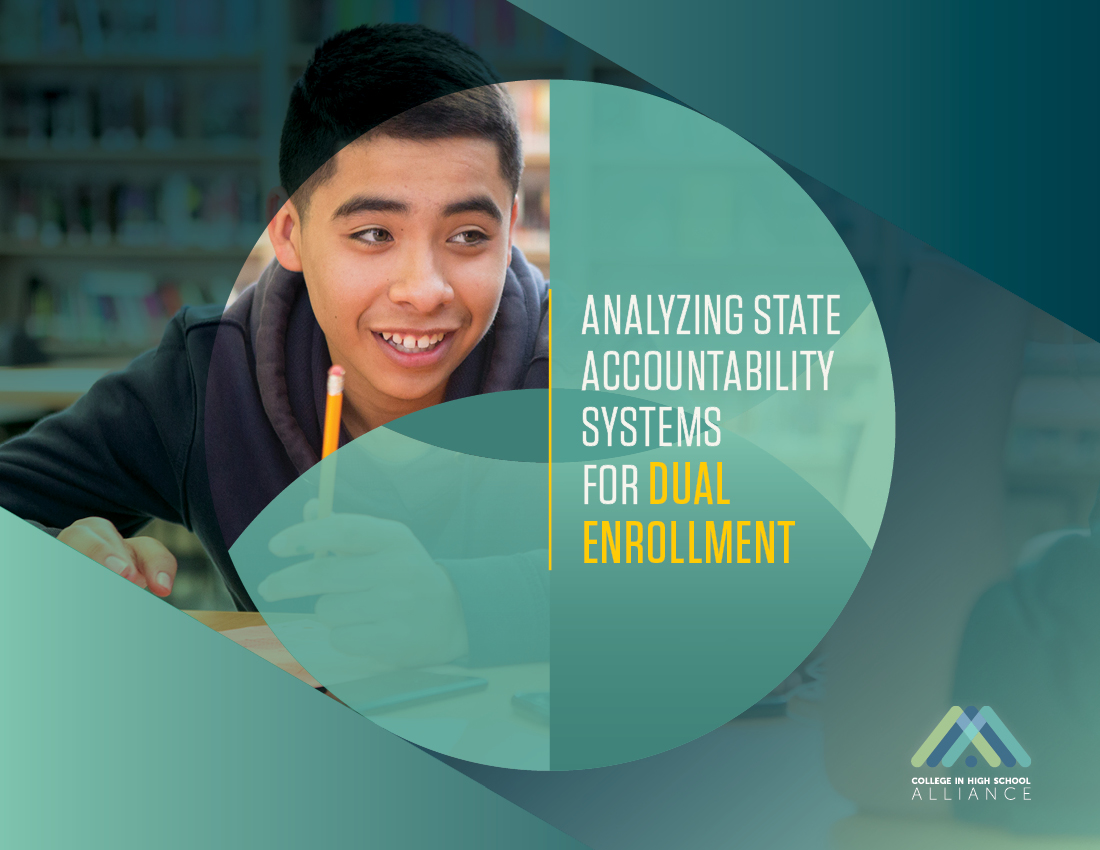October, 2025
How states are measuring and valuing college in high school opportunities
Dual enrollment has become one of the most powerful strategies for promoting college and career readiness — and one of the most widely adopted indicators in state accountability systems. But how exactly are states using these systems to support, scale, and sustain high-quality dual enrollment opportunities?
Analyzing State Accountability Systems for Dual Enrollment, developed by Advance CTE for the College in High School Alliance (CHSA), examines how states value dual enrollment within their Every Student Succeeds Act (ESSA) plans, Perkins V frameworks, and state accountability systems. The report explores how these systems are shaping dual enrollment participation, data reporting, and funding — and how they can be leveraged to drive equitable access and stronger learner outcomes.
Key Findings
-
42 states include dual enrollment participation or success as an indicator in at least one accountability system (ESSA, Perkins V, or state systems).
-
States vary widely in how they publicly report dual enrollment data — from aggregated metaindicators to detailed disaggregations by subgroup.
-
Accountability measures alone are not sufficient to expand access; states that pair them with sustained funding, cross-agency collaboration, and clear policy vision see the most meaningful growth.
-
Case studies from Alabama, Tennessee, and Utah demonstrate how aligning funding, accountability, and leadership can transform dual enrollment from a promising opportunity into a statewide strategy for career readiness.
State Snapshots
-
Alabama: Combined ESSA indicators and legislative appropriations have fueled a 230% increase in dual enrollment participation since 2015.
-
Tennessee: The Ready Graduate model and new TISA funding formula offer financial incentives for districts to expand dual enrollment and reward learner success.
-
Utah: Decades of collaboration between education and workforce agencies, plus robust state investment and data transparency, have made dual enrollment a statewide norm — with learners earning an average of 7.7 college credits before graduation.
Why This Matters
As states continue to align their education and workforce systems, accountability indicators for dual enrollment are becoming powerful tools to monitor progress, inform policy, and promote equity. This paper provides state leaders, practitioners, and policymakers with actionable insights for using accountability not just to measure outcomes, but to sustain and scale meaningful dual enrollment pathways.
Access the paper
Analyzing State Accountability Systems for Dual Enrollment


